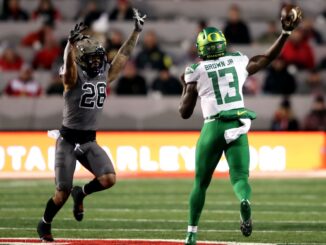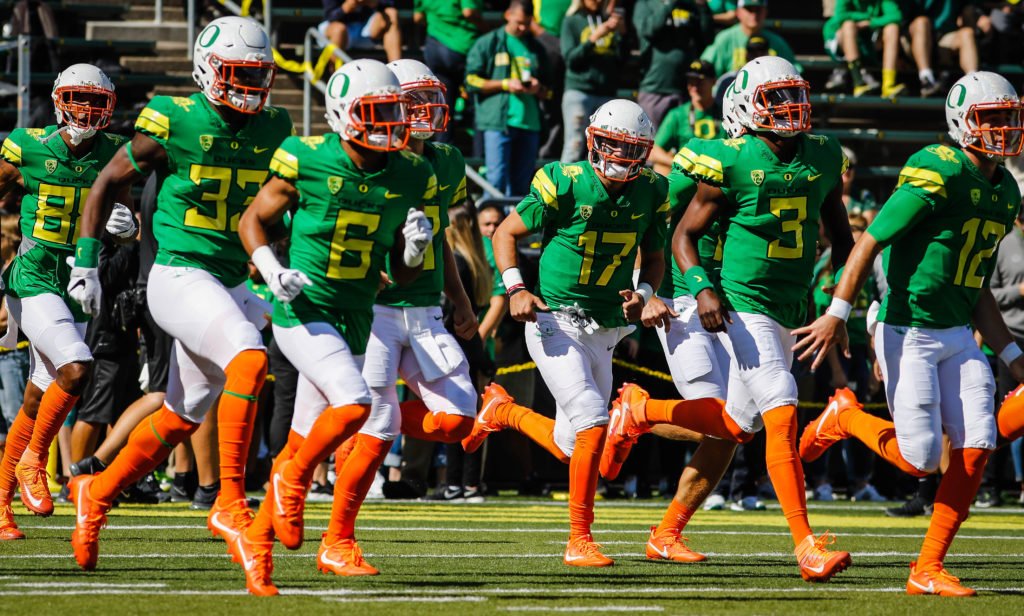
College football is more wholesome than professional football. Student-athletes are students first and athletes second. College football is an extracurricular activity like the engineering club.
You would be hard pressed to find even a casual fan who believes these things to be true. What college football may have been one-hundred years ago is one thing; what it is now is a microcosm of the intersection of income inequality, profit motive, television advertising and merchandising sales, and the high cost of a college education in the United States.
Many of the top college football programs are run like farm teams for the NFL, amateur in name only. Players aren’t paid for their efforts (or so we hope). Prodigious coaching staffs recruit them intensely. The best players choose their school based largely upon football team-related factors, such as how good the program and the coaches are, what players are already on the team that play their position, the program’s track record of developing and sending players to the NFL, et cetera. Sure, there are some who are interested in a particular academic program offered at a certain college, but that is hardly the norm. Players are some of the hardest working students on campus, endearing a brutally rigorous schedule of practices, workouts, training and rehab sessions, and long hours of watching film of themselves and their opponents—all of which is in addition to their actual class meetings and assignments. On top of that, the universities, conferences and television networks—to say nothing of apparel manufacturers—make loads of money off of their performances, likenesses, and names. Any attempt by players to make money off of themselves can have them barred from the sport.
What supporters of the status quo will tell you is that the players’ remuneration comes in the form of a full scholarship. While this is true, and a full scholarship is a valuable commodity in today’s economy, it is out of all proportion with what universities and others earn in revenue. It also doesn’t take into account the potentially life-altering injuries that athletes may sustain during their college playing career, which universities are not required to pay for long-term. Status quo keepers will also probably tell you that the new “transfer portal”, which is a platform for players to advertise themselves as transfer “students” when they want to switch schools/programs, is degrading the sport. That students can just jump from one program to another when they aren’t getting enough playing time, or aren’t getting along with a particular coach, and that this teaches bad life lessons to players.
Right here in the Pacific Northwest, there are plenty of recent examples of players who personify the free agency transfers. Gage Gubrud, who began his career at Eastern Washington, will likely start for Washington State this season. Last year, Gardner Minshew started for the Cougars last year, after playing first for Northwest Mississippi Community College and then East Carolina. In 2015, former Eastern Washington quarterback Vernon Adams transferred and started for the Oregon Ducks. This season, Jacob Eason Jr.—who transferred in from Georgia—should be the starter for the Washington Huskies. And these are just the quarterback transfers, which get all of the attention, but there are plenty more at other positions.
The transfer portal merely legitimizes what we already know to be true: many football players are players first and students second. College football is indeed an amateur training ground for the professional sport. Many college players take their studies seriously, but many do not. The latter group is perhaps epitomized most famously by former Ohio State and current Los Angeles Chargers quarterback Cardale Jones, who said that players didn’t “come here to play school.”
The transfer portal gives players more agency over their playing careers. If they want to transfer, they enter their name into the portal, where coaches from other programs can find them. It’s fairer because they originally commit to a program because they think they will get onto the field during actual games. If that doesn’t work out, they should be able to find a school where it does. Regular college students transfer all the time. Why should athletes not be allowed to?
As long as fans continue to watch and coaches continue to coach and players continue to play, we will have this uneasy relationship with apparel manufacturers and television networks and advertisers, all of whom comprise the economic backbone behind this endeavor. But we need to make big improvements to the system in general. Make sure students are amply fed and housed as part of their scholarship. Think this is already true? Think again. Imagine burning over five thousand calories on a game day, and having your school only be able to feed you a certain amount because of NCAA regulations, leaving you to lay awake at night with a gnawing hunger you can’t afford to sate. This is exactly the charge that UConn basketball start Shabazz Napier leveled several years back, and no doubt applies to football players as well. Consider paying all scholarship football (and basketball) athletes a stipend, paid for by revenue generated from advertising and merchandising sales. Essentially, treat football like the full-time job that it is for many players. On the flip side, what would it look like to require players to finish their educations as a result of receiving their scholarships? Sure, you can leave school early to go to the NFL, but you have to pay back your scholarship with your NFL money. Want the full scholarship, then stay until the completion of your degree.
It would be nice to envision a college football landscape in which education comes first and football second, but that is not the world we live in. Some can imagine that in the past college football operated this way, and it may have at certain schools. But as long as human nature includes competition, we will have players, coaches and programs challenging one another for competitive advantage. A more realistic outlook for fans, supporters and the NCAA alike, is to make the system work better for all interested parties, while also recognizing the profit motive at play. Consider a stipend for players, and try to connect their college careers as closely as possible to making sure that they complete their educations so that they can have a life after football ends, and ask institutions who earn profit from players to contribute to a long-term healthcare fund for players injured while playing football. Yes it’s a complicated balance, but we can do better.




